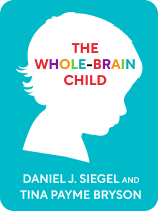

This article is an excerpt from the Shortform book guide to "The Whole-Brain Child" by Daniel J. Siegel and Tina Payne Bryson. Shortform has the world's best summaries and analyses of books you should be reading.
Like this article? Sign up for a free trial here .
Can you develop empathy in children? How can you help your child consider other people’s needs, feelings, and perspectives?
Empathy in children is essential for connecting with others and developing healthy relationships without compromising their sense of self. Interpersonal connection and socialization are important aspects of children’s psychological development.
Keep reading to learn how to develop empathy in children.
Building Empathy: Children Need Practice
Empathy involves reading nonverbal cues to recognize how others are feeling, and seeing other people’s perspectives. Empathy also improves your child’s ability to communicate effectively and compromise, all of which helps her to connect with others.
Research shows that people experience a stronger sense of personal meaning and deeper happiness through helping and connecting with others, rather than solely taking care of their own concerns. In other words, your “me” greatly benefits from being part of a “we.” To this end, it’s important to teach children empathy and interpersonal integration—maintaining a strong sense of self while integrating into a community, with consideration for other people’s needs, feelings, and perspectives.
Humans Are Wired to Connect With Others
The human brain is designed to connect with others: It interprets cues from other people, and it helps you respond accordingly. Additionally, since every experience you have creates new neural connections, your interactions with other people literally help to shape your brain.
Mirror neurons are a major factor in this process. When you watch someone else pick up a glass of water, your mirror neurons fire as if you had taken a sip of water. Your mirror neurons prepare you to reflect what you expect another person to do or feel. When your mirror neurons help you to understand another person’s emotions, you not only reflect them back, but you also absorb them. For example, if you’re particularly stressed one day, you may notice that your child also becomes somewhat anxious. This all means that humans are wired with the capacity to empathize and connect with other people.
Although your children’s empathy capacity is not yet fully developed, they need your help to learn and practice it. In fact, just like other skills, some children are naturally more or less adept at empathy than others, and they simply need more help developing it. Give your child plenty of opportunities to practice empathy by interacting and building friendships with other children—which will put them in situations that require empathy—and offer support when your child needs it.
Your Child’s Mental State Aids or Impedes Empathy
When you’re trying to teach children a lesson in empathy and connecting with others, be aware of whether your child has access to her upstairs brain, which controls empathy. If her upstairs brain is online, she’s in a receptive mental state. In this state, her social circuitry is switched on, which makes her physically, mentally, and emotionally more open to connecting with other people. By contrast, if your child’s downstairs brain is blocking the stairway to her upstairs brain, she’s in a reactive state. It’s nearly impossible to be open and empathetic with other people when you’re in this state.
If you pay attention to which state your child is in, it will help you to determine how to handle outbursts and misbehavior. When your child’s downstairs brain has taken over and she’s in a reactive state, comfort and support her before you attempt to reason with her.
Model Healthy Relationships to Develop Empathy in Children
One of the best ways to teach children empathy is to make sure that the relationship you have with them is strong, loving, and joyful. Your child’s early relationships will teach her how to navigate relationships for the rest of her life. Specifically, she’ll learn:
- How to communicate and listen effectively
- The importance of sharing and sacrificing for the benefit of another person
- The kind of emotional support she can expect from a relationship
From the time your child is a baby, she’s learning what to expect from other people through her interactions with you. If she feels loved and if her needs are met, then she’ll expect to find love and support in her relationships with others. However, if your child doesn’t feel cared for and is left to figure out how to soothe herself, the part of her brain that’s built for relationships can shut down because it’s not getting the human connection it needs.
Tips for Parents for Strong Connections With Their Children
Research shows that if you consistently respond to your child with empathy, she will thrive physically, emotionally, socially, and academically. The strategies we’ve discussed all help you connect with your child. However, one of the biggest factors determining the strength of your relationship with your child is how you’ve made sense of your relationship with your parents.
Your childhood experiences create the foundation for your life narrative, which is the story you create to make sense of who you are, how you feel about the past, why your parents (and other significant people) behaved a certain way, and how all of those factors shaped you. Just as implicit memories that haven’t been integrated can affect your present behavior without you realizing it, an unexamined childhood and lack of coherent narrative can have the same effect (in fact, implicit memories can play a role in this).
For example, if your father’s parents were cold and unsupportive, then he would’ve had to learn how to comfort himself as a child. Consequently, it’s likely that he took a similar approach to parenting you, telling you to suppress your feelings when you were sad or upset. If you don’t reflect on the wounds that produced your parents’ behavior and how their behavior affected you—through therapy, journaling, or talking with a friend or spouse—then you’re likely to repeat the pattern with your own child.
However, if you examine your experiences and create a coherent life narrative, then you can determine how you want to raise your children. Rather than repeating the pattern or blindly doing the opposite, learn from your own childhood experiences and be deliberate about your approach to parenting.

———End of Preview———
Like what you just read? Read the rest of the world's best book summary and analysis of Daniel J. Siegel and Tina Payne Bryson's "The Whole-Brain Child" at Shortform .
Here's what you'll find in our full The Whole-Brain Child summary :
- How to increase your child's self-awareness and emotional control
- Why the logical and emotional sides of the brain have to work together
- How to figure out why your child is afraid of something





